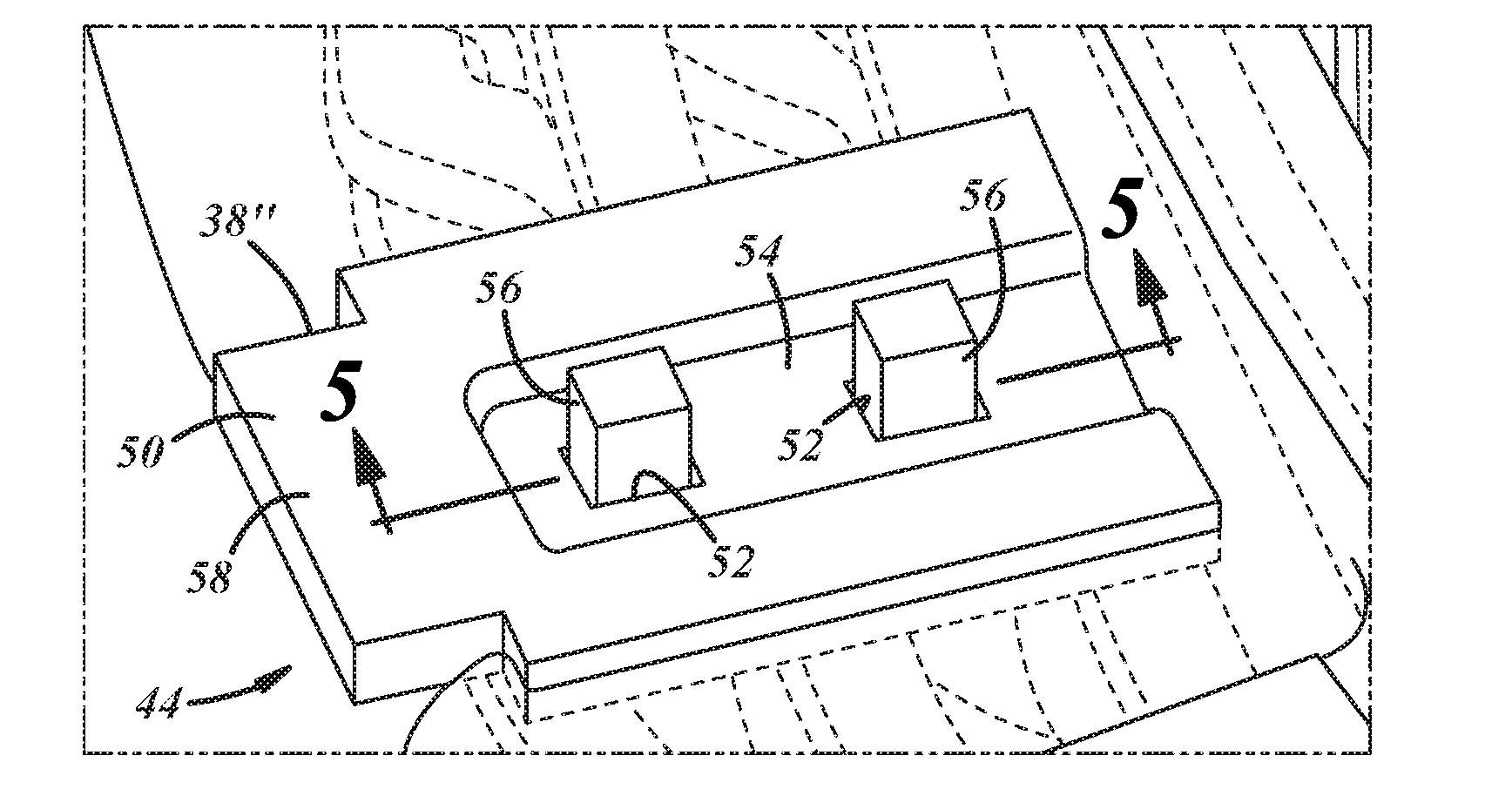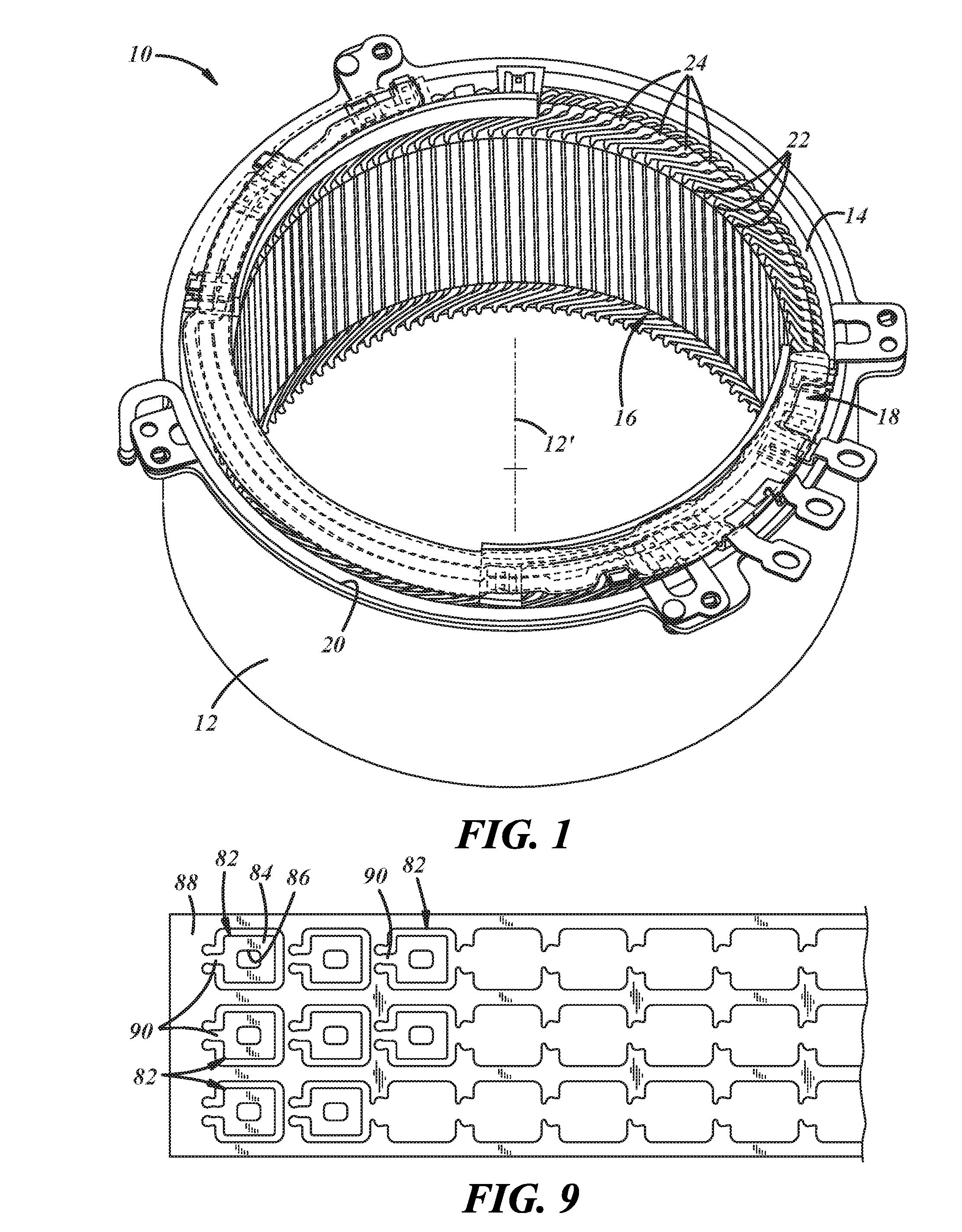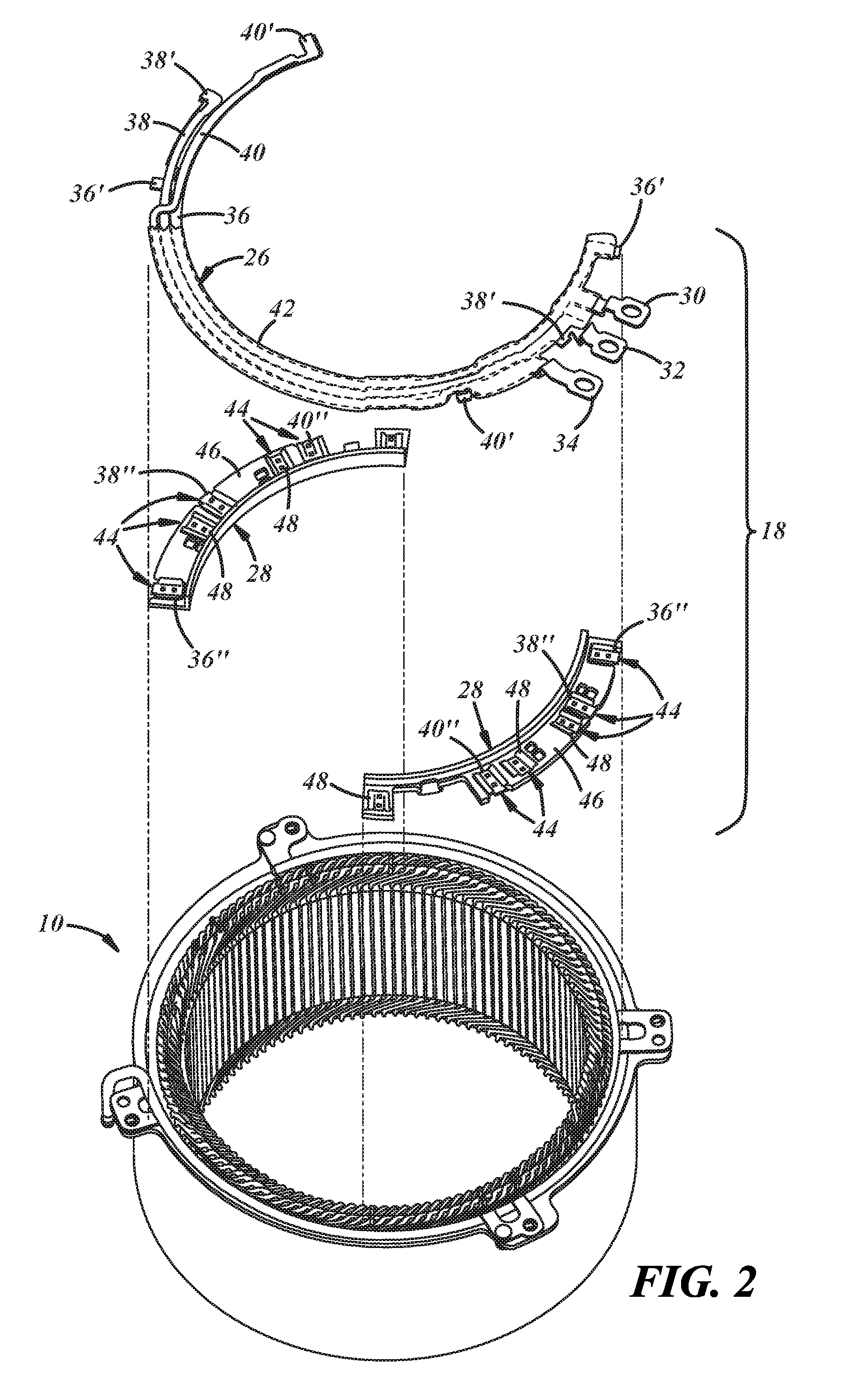Arc welding/brazing process for low-heat input copper joining
a low-heat input, copper welding technology, applied in the direction of windings, welding apparatus, manufacturing tools, etc., can solve the problem of limiting the available welding/brazing techniques that can be employed, and achieve the effect of reducing thermal damag
- Summary
- Abstract
- Description
- Claims
- Application Information
AI Technical Summary
Benefits of technology
Problems solved by technology
Method used
Image
Examples
Embodiment Construction
[0015]The need to join metal portions of a component without damaging or otherwise thermally degrading other portions of the component that are more sensitive to the attendant heat that accompanies the joining process is a manufacturing constraint that may arise in a variety of contexts. In particular, as demonstrated here and shown in FIGS. 1-3, a stator 10 for a 3-phase AC automobile electric motor may require a number of localized joints to be made between highly thermally- and electrically-conductive copper pieces that are in close proximity to more heat-sensitive electrically-insulating materials. Avoiding unacceptable thermal degradation to such electrically-insulating materials during the joining process helps ensure the automobile electric motor operates as efficiently as possible. Unfortunately, the preservation of electrically-insulating materials in close proximity to the copper joining locations has proven difficult to consistently achieve in the tight spatial confines o...
PUM
| Property | Measurement | Unit |
|---|---|---|
| diameter | aaaaa | aaaaa |
| diameter | aaaaa | aaaaa |
| standoff distance | aaaaa | aaaaa |
Abstract
Description
Claims
Application Information
 Login to View More
Login to View More - R&D
- Intellectual Property
- Life Sciences
- Materials
- Tech Scout
- Unparalleled Data Quality
- Higher Quality Content
- 60% Fewer Hallucinations
Browse by: Latest US Patents, China's latest patents, Technical Efficacy Thesaurus, Application Domain, Technology Topic, Popular Technical Reports.
© 2025 PatSnap. All rights reserved.Legal|Privacy policy|Modern Slavery Act Transparency Statement|Sitemap|About US| Contact US: help@patsnap.com



